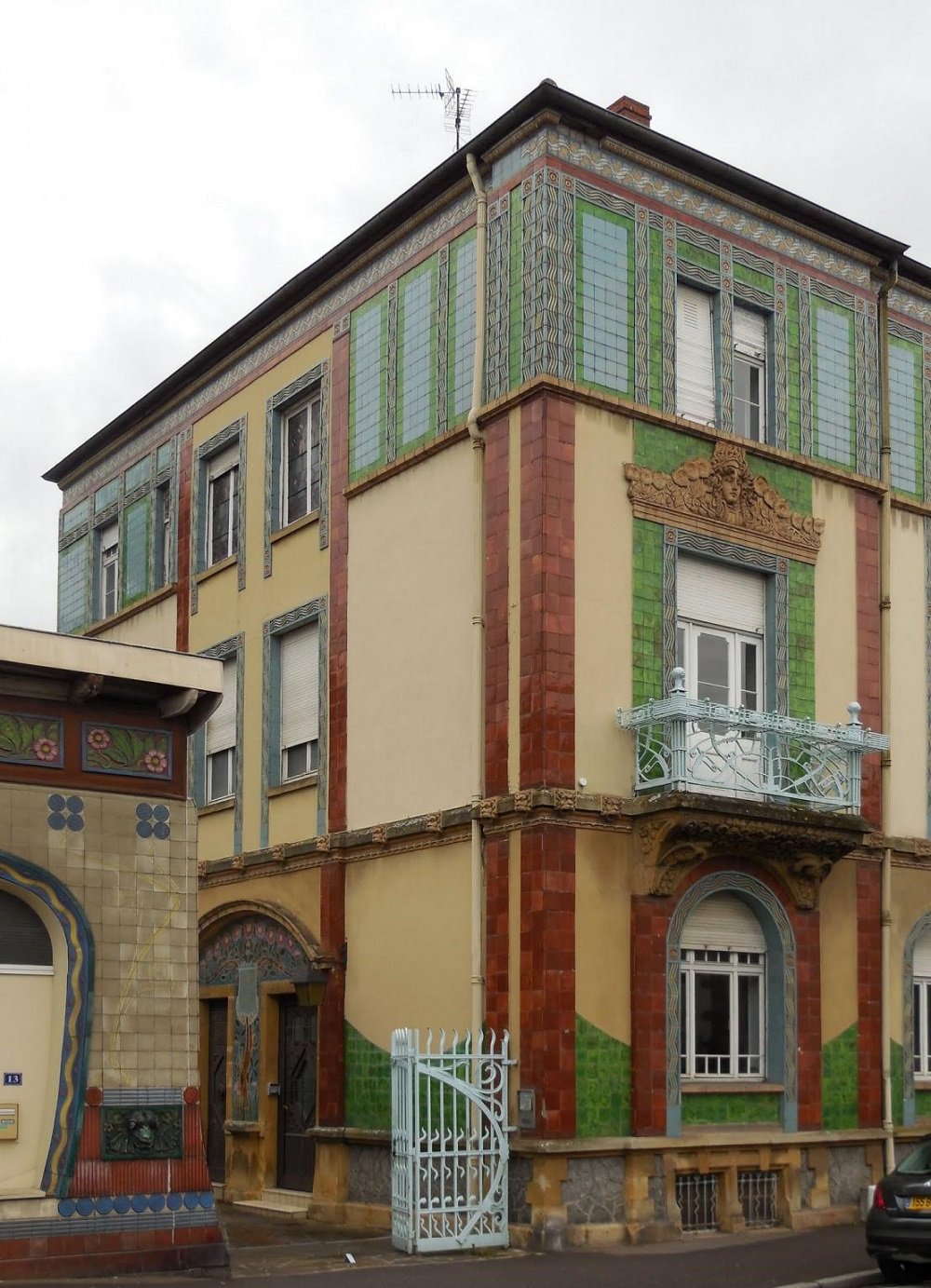#14046. Art Nouveau Façade: Colored Ceramics and Decorative Elements of an Early 20th Century Building

This magnificent example of Art Nouveau architecture showcases an exquisite colored façade with rich ornamental detailing. The building exhibits the eclecticism characteristic of the early 20th century, combining various decorative elements and materials. The upper part of the façade is particularly striking with its green-blue ceramic tiles forming geometric patterns typical of the Art Nouveau style.
The façade features a clear three-part division with contrasting color schemes: a cream-yellow base color, terracotta-red vertical elements, and green decorative inserts. A characteristic feature is the asymmetrical arrangement of decorative elements, including an elegant wrought iron balcony with light blue railings that adds lightness to the building.
Above the second-floor windows is an expressive molded frieze with floral ornaments—another feature of the Art Nouveau style. The ground floor is designed with arched elements, creating an interesting contrast with the rectangular windows above. Façade design in this style requires special attention to detail and understanding of historical context.
When developing a modern façade, one can borrow from this example the harmonious combination of contrasting colors, the interplay of textures (smooth plaster and textured tiles), and the use of decorative inserts to create accents. Wrought iron elements and ornamental ceramic tiles can become sophisticated details of a contemporary home, giving it individuality without excessive historical stylization.